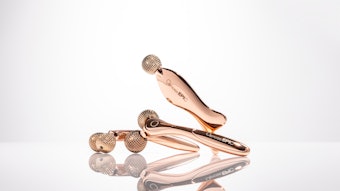
For years, scientists have been intrigued by the French paradox, a seemingly contradictory notion that the French eat a diet rich in saturated fat and lots of wine, yet have healthier hearts than those in America who are told by mainstream medicine and nutrition to eat a low fat diet and moderate alcohol consumption. Unfortunately, two-thirds of Americans are overweight or obese following these guidelines, so maybe there’s something to this French way of eating.1
I am constantly tapping into synergies between topical and dietary nutrition to make connections that will help clients source nature to bring their healthy skin to life. Many nutrients can be eaten and applied to the skin to nourish, protect and transform the health of skin. In this article, let’s dig into the amazing qualities of the grape.
Grape Basics
Grapes have been valued for their nutritional and medicinal benefits for thousands of years. Most medicinal benefits are attributed to grape wine and juice; however, grape leaves were traditionally used as bandages to stop bleeding, reduce inflammation and alleviate pain. Grapes are actually a berry, with a semi-translucent flesh and a smooth skin. Some contain edible seeds, while others are seedless. There are 8,000+ varieties of grapes in color such as black, red, purple and green as well as both sour and sweet tastes. Grapes are also packed with phytonutrients (plant nutrients), which can protect our cells and help improve our longevity.
Resveratrol
At the top of the list of phytonutrients studied in grape research is resveratrol. Resveratrol comes from a class of compounds called stilbenes, and this one functions as a phytoalexin. For those of us who are not trained in botany, a simple definition of phytoalexin is a type of plant that has chemicals in its skin that protect it from harm from stress, UV radiation, bacteria and fungus. When humans eat these or apply them to our skin, we also gain protective benefits, but the skin of the plant is where the real power lies. Resveratrol has recently been shown to increase expression of three genes, all related to longevity.2 The level of resveratrol varies in grapes grown in different regions. In preclinical studies, resveratrol has been shown to exhibit numerous biological functions, which could possibly be applied to the prevention and/or treatment of cancer, cardiovascular disease and neurodegenerative diseases.3 The takeaway message here–resveratrol is a good thing.
Eat Up
I like to think about food as being tasty little messengers that talk to our cells. The choices that we make in our diet can turn on or off little DNA switches that help or harm us. Eating a mainly plant-based, whole foods diet is one way to ensure that you are sending good messages to your body about your future health. Grapes are an incredibly powerful signal food, and the fabulous thing about grapes is that you can gain these benefits from drinking wine (and grape juice too).
The beneficial compounds are mostly concentrated in the skins and seeds of the fruit. This is the reason why red wine is more healthful than white, as the skins are removed for the fermentation process during white wine making. Snacking on whole grapes, and eating those seeds too, is another way to benefit from eating the mighty grape.
Grape-derived Skin Care
In topical skin care, Vitis vinifera, the technical name for grape seed oil and its many forms, has been used for decades as a skin conditioning agent, antioxidant, flavoring agent, and/or natural preservative.4 Grapes contain numerous beneficial chemical compounds, namely proanthocyanidins, polyphenols, flavonoids and anthocyanins. When used in topical skin care products, these potent antioxidants can impart significant benefits in skin quality. The first way is as a protectant, reducing free-radical damage and lessening the sun’s damaging effects.5, 6 In fact, grape seed extract can help to prevent skin cancer when combined with other antioxidants and applied topically.7 In addition to these wonderful protective factors, these amazing compounds found in grape seed extract have also been shown to offer wound-healing properties,8, 9 and grape seed extract's active constituents inhibit enzymes that break down skin's elastin, hyaluronic acid and collagen (elastase, hyaluronidase and collagenase respectively). Skin care products containing high concentrations of stable grape seed extract help reduce the redness, inflammation and irritation (burning, stinging and prickling) of rosacea.10
As skincare professionals, the main goal is to prevent damage and slow down the inevitable aging process in our skin. Grapes are a powerful little berries that attack the aging process from many angles.
My recommendation as a clinical nutritionist and natural skin care producer is to incorporate the mighty grape into your diet and skin care regimen every day to nourish your skin from the inside out and outside in. Mother nature usually has a cure for what ails you, and I find that the best results come when we tap nature to bring out the natural beauty in our skin.
References
1. http://stateofobesity.org/rates/
2. www.whfoods.com/genpage.php?tname=foodspice&dbid=40
3. https://lpi.oregonstate.edu/mic/dietary-factors/phytochemicals/resveratrol
4. www.cir-safety.org/sites/default/files/vitis022012SLR_for%20posting.pdf
5. J Shi. J Yu, J Pohorly and Y Kakuda, Polyphenolics in grape seeds-biochemistry and functionality, J Med Food 6(4) 291-9 (2003)
6. W Leifert and M Abeywardena, Cardioprotective actions of grape polyphenols, Nutr Res 28(11) 729-37 (2008)
7. X Yuan, W Liu, J Hao, W Gu and Y Zhao, Topical grape seed proanthocyandin extract reduces sunburn cells and mutant p53 positive epidermal cell formation, and prevents depletion of Langerhans cells in an acute sunburn model, Photomed Laser Surg 30(1) 20-5 (2012)
8. S Khanna et al, Dermal wound healing properties of redox-active grape seed proanthocyanidins, Free Radic Biol Med 33(8):1089-96 (2002)
9. A Hemmati, N Aghel, I Rashidi and A Gholampur-Aghdami, Topical grape (Vitis vinifera) seed extract promotes repair of full thickness wound in rabbit, Int Wound J 8(5) 514-20 (2011)
10. DF Fitzpatrick et al, Vasodilating procyanidins derived from grape seeds, Ann N Y Acad Sci 957 78-89 (2002)










